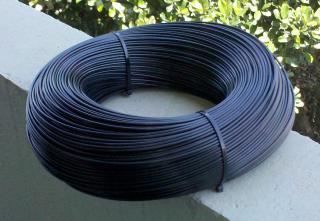First, interesting news: the ABS filament finally arrived! A nice 5 lb package, bought in the 3D-ink . I don't know other plastics in detail, but it is quite smooth and has a diameter of 2.85 mm. This material is missing from most vendors, so we only found it in black ...
Milling machining parts in is much more laborious and time consuming than I thought, we started right after lunch and ended late at night.
First we did the heater block, it took several hours ... We made 2 of them so that we have an extra one for other experiments.
 |
| Heater block (click to enlarge) |
We simplified the threads, which became smooth with tight fitting with an M3 screw. 100% approved, it not only easier to manufacture but it was easyest to mount, dismount and adjust in position.
It was also "Tropicalized" (coloquial expression when adapting a projetc), a 6R8 5W resistor is easier to find (bought at Ohmega ), and thermistor has a hole with a wider part to the isolation of "Spaghetti fiberglass (bought at Casa Ferreira ). The high temperature adhesive Kapton came directly from China: High Temperature Tape .
The thermistor was purchased in Mendel-parts .
Then we did the nozzle of the extruder ...
The drill of 0.5 mm is so thin that it was necessary to realign the lathe and yet it was still critical. At one point I saw the bit folding and Fabio was able to take it out without breaking! This is not for everyone.
After a lot of work (only by Fabio), a bill that I at least thought it was beautiful.
We also made a new block of Teflon (not shown). The block of wood (Maçaranduba) was slightly modified. Each piece was adjusted on the previous one, so everything fits perfectly.
 |
| New Tip of the extruder mounted (click to enlarge) |
An interesting aspect of this project is that the heating occurs at exactly the desired point.
The resistor being farther away pruduces a more stable temperature because the fluctuations are reduced by the body of the block.
It is not helpful to have many resistors, just one with power enough to do the job. It is interesting to be able to better direct heat.
The new Tip m was largely copied from the last Adrian . Very important detail: it has the same diameter in brass and PTFE: 3mm! (not really a good thing)
PTFE now enters into the brass, it minimizes the problem of expansion of PTFE with the high pressure and temperature. Still a bit of plastic (5mm) melts in the reagion imediatly out of brass piece.
The strength of the extrusion is now exercised throughout a block of support, has improved significantly. In the original material is high temperature resistant, PEEK, but the wood worked perfectly: do not worry, do not deform and will not burn.
The block heater can be adjusted, it should be very close to the nozzle tip. The hole of the thermistor takes the temperature in the middle of the block, opposite the resistor.
Complete design: BicoExtruder01.pdf
Are we connect everything and it worked ... how wonderful!
But we still have problems:
- The plastic tractor is slipping, it seems that the teeth are very shallow.
- The engine is weak, sometimes fails. It needs a little manual help. Even increasing the voltage to 18V in the engine.
- The two problems above are independent and add up: it sleeps even when pushing by hand.
- We have an engine of 4.5kgf.cm NEMA17 kgf.cm the Masmorra (meeting point) ...
- The PID Temperature Control leaves much to be desired, Gil Pinheiro work with this and has helped me understand what is wrong. Soon we will have a better system for now is good enough to continue testing.
- support between the PTFE and the brass was made plan to distribute the pressure better, but still there was some deformation. Perhaps the original option of using a thread to improve this aspect.
- Antonio Santos had passed this link on making a strengthening of copper around the PTFE. This new geometry improves the problem, but it showed me that even then there is an expansion of about 5mm in length. I will do more tests when we have a stronger engine.






Nenhum comentário:
Postar um comentário